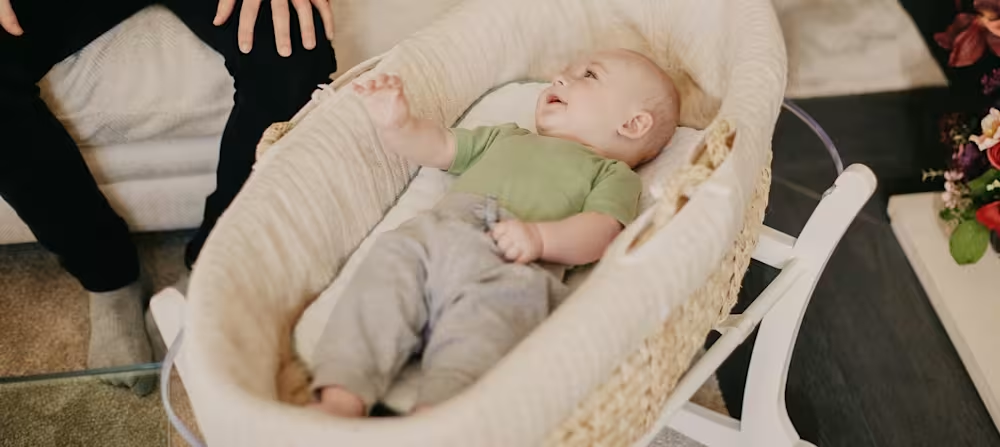4 nap time tips for parents with multiple children
Updated Oct 16, 2025

We know how challenging it can be to juggle the needs of more than one child. Every day we hear from parents who want to improve sleep, but also know they can’t stay home all day to make sure their baby gets all of their naps in the crib. We get it! Even if you only have one child it can be maddening to feel bound to the house day in and day out due to those short wake windows.
It’s also common to hear that when families do stay home, it’s still difficult to give the baby a nap because the older sibling makes a lot of noise and/or needs attention. We can relate to that too!
4 tips for surviving nap time when you have two or more children:
1. Offer earlier bedtimes when your child has a short nap (or skips it entirely)
If you’re actively working on changing routines at night (moving away from rocking to sleep or transitioning away from co-sleeping for example), then we recommend prioritizing naps for a week or two. This will help ensure that your child is well rested, which will cut down on tears and night waking as you work on changing habits.
However, if you’re not starting anything new at night, it’s understandable that you’ll need to have some flexibility with your child’s nap schedule. Whether you’ve got a baby sign language class at the library in the morning or your older children have soccer practice after school, things come up and you can’t always be at home to offer a nap.
Aim for at least one good nap at home per day if you can. Overtiredness tends to cause disrupted sleep, so we want to limit it as much as possible. If another nap is a short one in the car, or it’s missed entirely, offer the next sleep period a bit earlier to minimize overtiredness.
2. Prepare quiet boxes to keep toddlers and preschoolers occupied
If you have a baby and a toddler (or preschooler) you know that it can be hard to keep big sibling entertained while little sibling goes down for a nap.
Preparing several “quiet boxes” ahead of time, to keep your toddler busy, can work wonders! We recommend getting a few inexpensive, lidded bins and stuffing them with activities that your older child can do on their own while you’re occupied with the baby.
For instance, you might include: crayons and paper, stickers, puzzles, books, cars and figurines. As long as the toys haven’t been played with a lot before (and the bins are continually rotated and kept out of sight during the rest of the day), they’ll feel special and be able to hold your child’s attention.
3. Embrace white (or “pink”) noise to muffle sounds
While some families worry about adding in background noise for fear that their child will always “need it,” we find that continual in a child’s bedroom can do a great job of helping to mask household sounds. This can be especially helpful for siblings that share a room or have bedrooms in close proximity.
Likewise, if you’re out with your children and one falls asleep in the stroller, using a portable white noise player can help drown out the sounds in the environment and lengthen the nap.
4. Understand your child’s temperament
For many families, a flexible schedule is really important. While most children thrive on routine and regular naps, some are more adaptable than others when it comes to varied nap times. If you have a child who can easily go with the flow, then you can probably be more flexible about naps.
However, there are also children that are less adaptable and are very sensitive to being overtired. For those children, one missed nap due to a special event can cause a day or more of extra crankiness and disrupted sleep. If your child’s temperament makes flexibility difficult, you’ll want to be sure to choose wisely when it comes to skipping a nap.

Takeaway
When you have multiple children, it can be impossible to make sure everyone gets enough day sleep sometimes. That’s just life! We do the best we can and understand that naps can always be prioritized the next day as needed.
Nap time for multiple children FAQ
Share article:
Note: The content on this site is for informational purposes only and should not replace medical advice from your doctor, pediatrician, or medical professional. If you have questions or concerns, you should contact a medical professional.
Share article:







